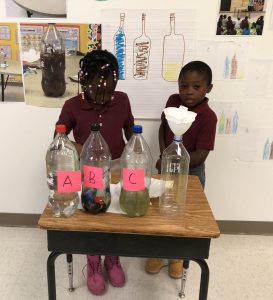By Diona Williams
PBL Coordinator at Purpose Built Schools Atlanta
As PBSA educators, it is our goal to engage, empower, and inspire our K-12 students across the entire Carver Cluster. The current work we do with students makes a significant impact on their academic and social and emotional development. More profoundly, the work we do with students today will leave an indelible imprint on them that will help to chart the course of their futures for generations to come.
Since the work we do as educators holds so much value for the students who sit before us every day, it is vitally important that our instruction is not only student centered, but that it prepares and equips students with the cognitive and conative skills they will need to be competent citizens of a global society. We must design our instruction in such a way that it will challenge our students to use the linguistic, mathematic, scientific, economic, and historical knowledge and understandings they gain in classrooms and apply that knowledge and understanding to grapple with real world problems.
Sixteen years ago, when I started as an educator, I taught my students the way I was taught. My pedagogical methods involved a great deal of whole group and direct instruction. I didn’t do enough to make my students excited or hungry to learn. I didn’t present information to my students in a way that created memorable learning experiences for them. After much soul searching and deep professional reflection, I set out on a quest to ensure I was appealing to my students’ interests, addressing their different learning modalities, and exposing them to robust and rigorous instruction that caused them to ask questions, conduct research, make claims and support those claims with laboratory and textual data.
On my journey to improve my instruction, I was introduced to project-based learning, an effective way of teaching that allows students to develop a deeper understanding of topics while building the skills and knowledge they’ll need beyond school walls and well into their lives.
Project-based learning (PBL) is an instructional approach that provides opportunities for students to collaborate and drive their own learning through an extended course of study of a real-life topic that is applicable to their lives. This longer, in-depth approach to learning teaches students skills that are integral to their future, such as problem solving, critical thinking, time management, communication, collaboration and creativity/innovation.
I remember the first time I successfully used the PBL approach to engage a group of students in an ELA and social studies driven PBL project.Students questioned the claims historians have made about European explorers and the claims 2016 American presidential candidates were making about themselves.
My students became ALIVE! Of their own volition, they used different forms of media to research the lives of various individuals, past and present. From their research, they formed their own opinions. Organically, students began debating about issues in America and their local community that were important to them. They even began to warn each other about believing “the hype,” or propaganda about people and not making informed decisions as it relates to electing political leaders. ALL OF THIS WAS HAPPENING WITH A GROUP OF NINE YEAR OLD CHILDREN!
As the PBL Coordinator at Purpose Built Schools Atlanta, I work with educators at each of our four schools–Thomasville Heights Elementary School, Slater Elementary School, Price Middle School and Carver STEAM Academy–to identify quarterly topics for all students to study using the PBL model.
First, PBSA grade level teachers work together to map out their academic content (ELA, math, science, and social studies) standards per quarter. Each quarter is equivalent to nine weeks. After teachers have mapped out their standards, they work with me and their instructional coaches to connect their standards to a viable real world problem that the students can explore.
Once they identify a real world problem that is connected to a grade level’s academic standards, then an open-ended driving question is formed. The driving question guides the students throughout the entire project because they work to find various answers to the question.
Recently, Thomasville Heights’ kindergarten students asked “How can we provide educational resources to assist visually impaired students in the classroom?” After identifying a driving question, teachers work to design PBL instructional tasks that help to teach their standards while simultaneously addressing the PBL driving question through their instruction.

Finally, students show evidence of all that they have learned at the PBL showcase. The PBL showcase is the culminating event at the end of the nine-week period. During the PBL showcase, student work is displayed, students articulate to all they have learning during the course of the project. PBL showcases bring parents, community members, school business partners, and experts in various fields together to celebrate the hard work of students.
In turnaround schools, the PBL method can be especially successful if you take time to identify topics that matter to students and their communities. This helps make school more approachable and relevant to their daily lives, inspiring confidence in their abilities and enthusiasm for coming to school.
In the past, PBSA students have explored the following topics.
- Ways to reduce waste and create sustainable communities
- Entrepreneurship as a mean to alleviate generational poverty
- Methods for properly using green space to address the many issues associated with urban food deserts
- Service Learning
Using their knowledge of chemical interactions, Prices’ eighth grade students created natural hair and skin products. Slater’s students used their knowledge of marketing and messaging to create schoolwide shirts promoting collaboration and collective effort.
Project-based learning is the powerhouse curriculum needed in every turnaround school. It has revolutionized how I approach education, and I’ve seen it revolutionize students’ lives, year after year.
